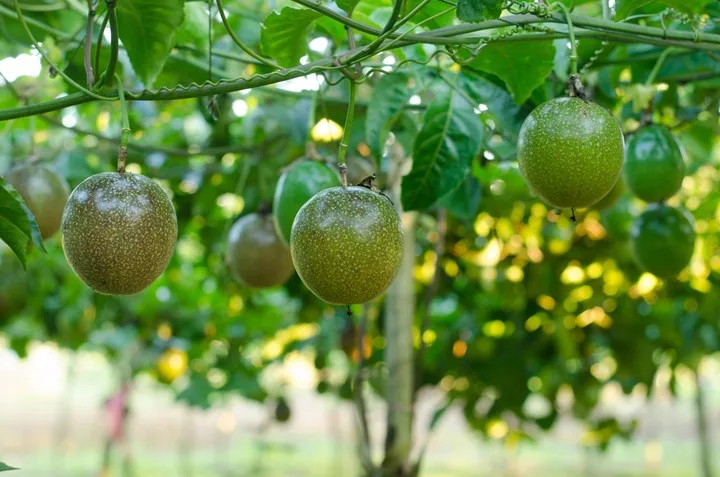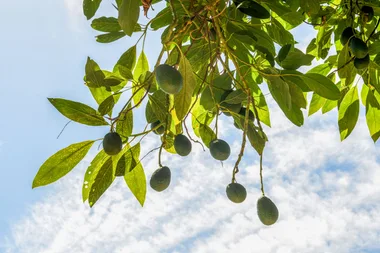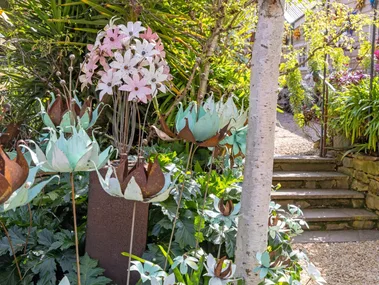Passionfruits are an Aussie favourite for growing and eating. But even if you have a vine in your backyard, you may not know exactly how or when to pick passionfruit for the best results. It all comes down to making sure the fruit is ripe, as it won’t do much ripening once it’s picked.
How do you know when passion fruit is ripe?
You will know passion fruit is ripe when the fruits are plump, have a slight give, and are fully coloured, either dark purple or dark yellow, orange or red. Slightly wrinkled fruits are super ripe and will have a sweeter taste than smooth skinned fruits.

Benefits of passionfruit
Passion fruit is the fruit of the Passiflora vine, a type of passion flower. It has a tough outer rind and juicy, seed-filled centre. There are several types that vary in size and colour, but purple and yellow varieties are the most common.
Passion fruit has an impressive range of nutritional values, including compounds like vitamin C, B vitamins, niacin, iron, phosphorus and dietary fibre. It’s also high in antioxidants and polyphenols, with studies suggesting it could have benefits for immunity and blood pressure, among other things.
Climate
Passionfruit vines are versatile but are best suited to subtropical and temperate climates, provided there is protection from frost when young. Plant a passionfruit vine between spring to early autumn season and provide it with a wall or framework to climb on.
The dark purple passion fruit is grown in Hawaii, and southern Florida and California. The bright yellow variety, sometimes called golden passion fruit, is more tropical and sometimes bears a larger fruit. The purple passion fruit is preferred for fresh consumption while the yellow passion fruit is most often used for juice processing and making preserves.
There are over 50 varieties of passionfruit vine, including Banana, Hawaiian, Norfolk Island, Panama Red and Nellie Kelly. The most commonly found passion fruit in Aussie backyards is the Nellie Kelly – a cultivar that has been bred to withstand cooler temperatures and resist pests and diseases. In more tropical regions, Panamas grow best.
If you’re yet to plant a passionfruit vine, here’s how to do it.

How to eat passionfruit
To eat a passion fruit raw, cut it in half and use a spoon to remove the pulp from the rind. The rind is not edible. People can eat both the seeds and the pulp, or just the pulp.
Did you know you can open some passionfruit with your bare hands? Place the passionfruit between your palms, clasp your fingers together and push your palms towards each other to break the passionfruit skin, then pry it open with your fingers. Watch out for the juice!
How to ripen quickly
You’ll know a passionfruit is ripe when you hold them and they feel heavy, meaning they are full of the jelly-like fruit and juice. They should also have a wrinkled skin that you will be able to squeeze. The softer the skin, the riper the fruit is. That’s also a sign of when to pick passionfruit.
To ripen passion fruit at home, place it at room temperature and give it a few days to ripen further. Keep it away from direct sunlight.
Green passion fruit won’t ripen fully off the vine, but ripe fruits will develop deeper, sweeter flavour if left uneaten for several days.
You could eat unripe passion fruit but the taste would be very tart.










